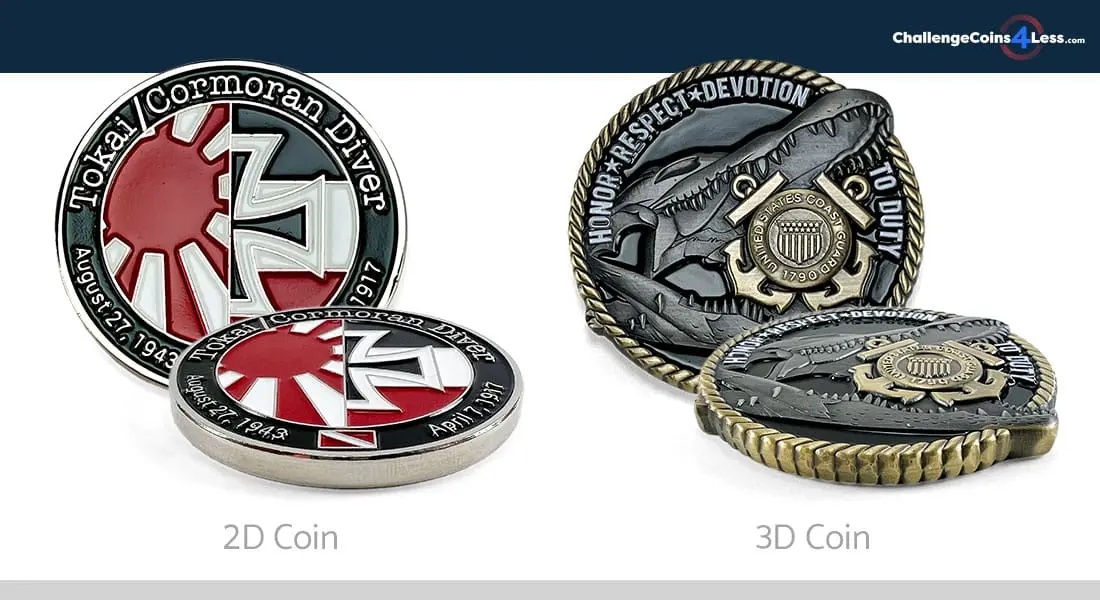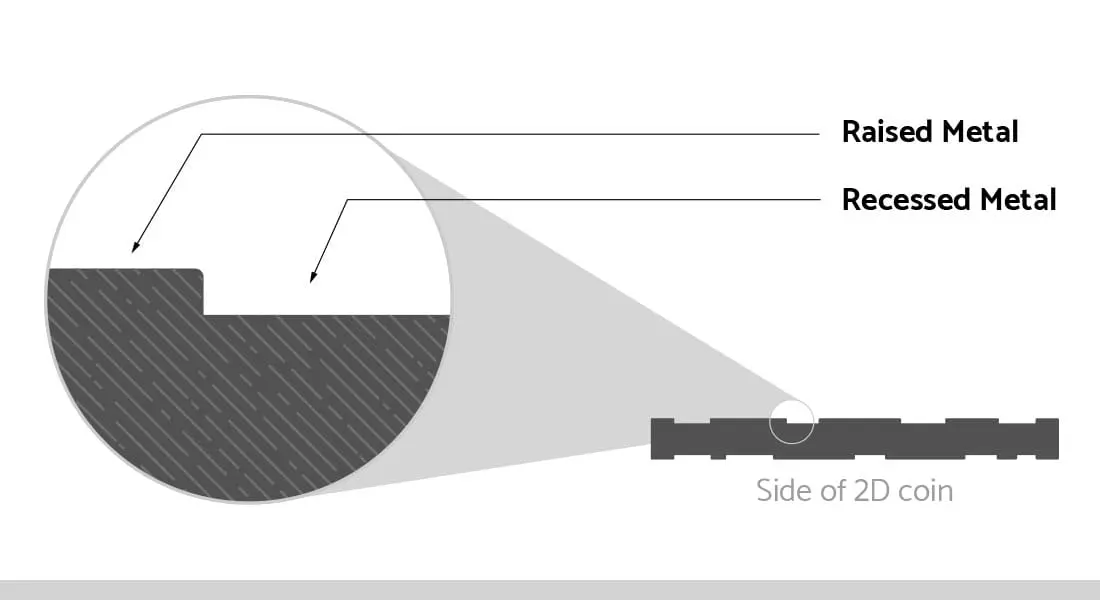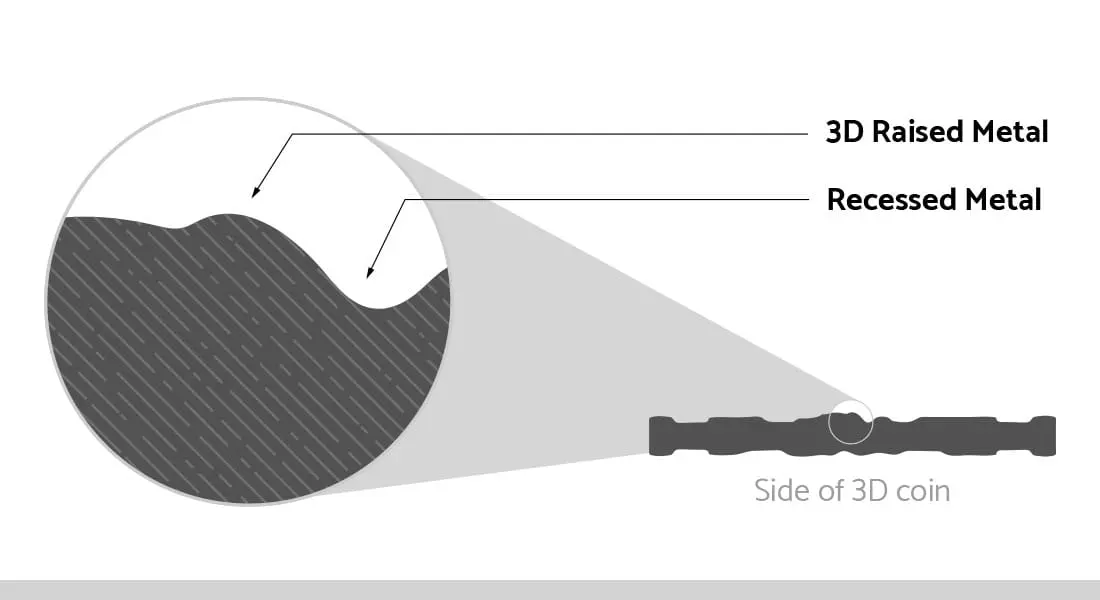What's the difference between 2D and 3D Challenge Coins ?
Customers sometimes ask us what the difference is between 2D and 3D coins. We understand this can be a little confusing. It’s easy to know which is which once you understand how they’re made.
A 2D coin is a standard challenge coin struck from a die mold, whereas a 3D coin employs extra tools to emboss your design so it jumps off the coin.

All coins start as 2D. With those two dimensions of the coin, you get a level of raised metal and a level of recessed metal to work with. Typically, this is enough to capture most coin designs, with the raised metal outlining the graphics and the recessed metal filled with color (or left purposefully blank for depth.)
In these cases, you’ll be able to run your finger across the face of the coin and feel all the grooves of the design, but nothing will surpass the height of the rim.
With 3D coins, the 3D elements are raised and sculpted in relief, so they extend up off the face of the coin. A 3D coin needs more than two levels of metal, so a separate mold is created specifically for the 3D elements that turn your coin into a shiny pop-up book. That’s why this option is a separate, extra charge—and also one of the coolest things you can do with custom challenge coins!

The difference to keep in mind is that a 2D coin only has two levels, one raised level, and a lower, recessed level. On the other hand, 3D coins have a virtually unlimited number of levels. Which means we can round edges and create smooth gradations between the raised and recessed areas.

The 3D option has multiple planes and creates what we refer to as a 3D mold. The 3D style works great for buildings, statues, images of people, and other objects that are three-dimensional in real life.
So it would seem that 3D would be the way to go, right? Not always.
The 2D designs are optimal for flat images, while 3D allows for better details such as sculpted images and rounded edges. For 2D coins, you can't provide as much detail or depth as you can with 3D coins. However, 2D coins are well suited for adding unique custom options that will elevate the overall design.
One of the biggest reasons for sticking to a 2D design is that 2D coins are especially easy to add color to. The recessed areas on the designs are perfect for filling in with color. This can be seen on flags, logos, and more.
Images such as cartoon mascots, drawn characters, and other illustrated designs are excellent concepts for 2D coins.
On smaller coins, 2D designs also allow for more distinct details. The visual elements, recessed levels, and text remain clear and clean. With 3D coins, you can lose detail on smaller designs.
The process by which we create the 3D mold makes it impossible for us to color fill any part of the 3D image. The 3D portion of the coin will remain in the finished metal type of your choosing. We can, however, create 3D images that have color fill around them on other parts of the coin’s surface.
In terms of 3D coins, these are well suited for realistic designs with more depth. Some great options include statues, mascots, buildings, or emblems. Our 3D coins are also perfect for antique plating, which brings out the highlighted details of the coin. Just keep in mind that 3D coins look better in larger coin sizes . The details will get lost if the coin is too small.
We produce both 2D and 3D coins you’ll be proud to carry, distribute and display. Let us know if you have any questions at all about the 3D process and what we can do for you!
Support Topics
Design